 February 14, 2019 John E. Ross, KD8IDJ, Editor
| ||||||
Riley Hollingsworth, K4ZDH, to Oversee Volunteer Monitors Development and Implementation Riley Hollingsworth, K4ZDH, will oversee the development and implementation phases of ARRL's new Volunteer Monitors (VM) program, which will replace the Official Observers (OO) program. Hollingsworth, who once handled Amateur Radio enforcement for the FCC, has stepped down as ARRL Atlantic Division Vice Director to avoid any appearance of a conflict of interest. The development phase of the program is already under way.
ARRL President Rick Roderick, K5UR, said that Hollingsworth was the ideal person to lead ARRL's efforts in the development and implementation of this joint program with the FCC. "I support Riley's decision to concentrate his efforts on this very valuable project on behalf of the ARRL," Roderick said. Approved by the ARRL Board of Directors last July, the Volunteer Monitors will work in cooperation with the FCC. Volunteers trained and vetted by ARRL will monitor the amateur bands for possible instances of misconduct or to recognize exemplary on-air operation. Cases of flagrant violations or noncompliance will be directed to the FCC for action, in accordance with FCC guidelines. The program, which aims to re-energize Amateur Radio enforcement efforts, was proposed by the FCC following the closure of several FCC regional offices and reductions in field staff. Hollingsworth has identified three phases to the program -- development, solicitation and training, and implementation. The development phase will include drafting a mission statement, clearly defining ARRL's and the FCC's requirements and needs as part of the program, drafting a Volunteer Manager job description, and developing a training manual for volunteers. The solicitation and training phase will involve identifying the geographical locations where volunteer monitors will be most needed, soliciting applications, and screening applicants. Current Official Observers will be invited to apply for appointment as Volunteer Monitors (VMs). The ARRL Board has expressed its appreciation to the OOs for their dedicated volunteer service over the years. Implementation will involve having the volunteers provide field reports, and ARRL staff offering guidance to volunteers to ensure that the information gathered meets FCC requirements. Continuing education will be provided to the volunteers as part of the program. Hollingsworth has committed to ensure training adequacy for new VMs, to review the quality and utility of Volunteer Monitor submissions to the FCC for enforcement action, and to advocate for rapid disposition of cases appropriately submitted to the FCC. ARRL officials estimate that it will take 9 - 12 months before the first Volunteer Monitors begin filing reports. US Amateur Radio Population Grows Slightly in 2018 The US Amateur Radio population once again grew by about 1%, based upon 2017 and 2018 year-end FCC database statistics provided by Joe Speroni, AH0A. The 755,430 total licensees represent nearly 7,300 more license holders than those that were in the database at the end of 2017. Nearly 51% of the Amateur Radio population in the US -- 384,145 -- hold a Technician license. Generals are second with 175,949, and Amateur Extras number 147,369. Advanced and Novice licensee populations continue to decline, with 39,607 Advanced and 8,360 Novices, as the FCC no longer issues Advanced or Novice licenses. A more significant statistic is 31,576 new FCC licenses last year, although that's 620 fewer than came aboard in 2017.
Upgrades also are down slightly, compared to last year -- 9,456 in 2018 versus 9,576 in 2017, she added. "For the fifth year in a row, we have conducted more than 7,000 Amateur Radio exam sessions in a year -- an important milestone for the ARRL VEC," Somma recounted. "Our program continues to provide outstanding service to the ARRL, its members, and the entire Amateur Radio community." ARRL VEC filed a total 30,393 license application forms last year, compared to 31,014 in 2017. That includes new, upgrade, modification, renewal, and club station filings. At 7,035 in 2018, the number of exam sessions conducted by ARRL VEC marginally trailed the 7,075 held in 2017. ARRL VEC served 34,493 exam applicants in 2018, compared to 35,352 in 2017. Exam elements administered by ARRL decreased from 47,152 last year to 45,817 this year, Somma said. Nearly 1,800 new Volunteer Examiners (VEs) have been added to the ARRL VEC program. FCC Invites Comments on Amateur Radio-Related Petition for Rule Making The FCC has invited public comments on a Petition for Rule Making (RM-11826) from an Ohio radio amateur seeking to amend the Part 97 station identification rules to better accommodate and simplify station identification during an emergency net, drill, or activation. ARRL member Robert A. Dukish, KK8DX, filed the petition in December, and the FCC put it on public notice this week. Dukish seeks a change to Section 97.119(a) of the rules, which requires an amateur station to transmit its "assigned call sign on its transmitting channel at the end of each communication, and at least every 10 minutes during a communication."
Specifically, he is suggesting that a simple approach would be to permit the net control station or other designated participant to announce from a single point the call signs of every station taking part in the net or exercise, when tactical call signs often are in use, at 10-minute intervals, using automatic CW identification. Dukish suggested amending Section 97.119(a) to add, "except during a local emergency network activation or drill," and providing that in such situations, a net control or designations station would be "authorized to announce all participating stations' assigned call signs at no more than 10-minute intervals while the net is in progress." The amendment would provide that participating stations "be within a 50-mile distance of the identifying station, and each individual station must self-identify by transmitting its assigned call sign at least once per hour." CW transmission could be no faster than 25 WPM if sent automatically to satisfy the suggested amendment. Interested parties may comment via the FCC Electronic Comment Filing Service (ECFS). The Doctor Will See You Now! "Are We Entering a Maunder Minimum?" is the topic of the latest (January 31) episode of the "ARRL The Doctor is In" podcast. Listen...and learn!
Every 2 weeks, your host, QST Editor-in-Chief Steve Ford, WB8IMY, and the Doctor himself, Joel Hallas, W1ZR, will discuss a broad range of technical topics. You can also email your questions to doctor@arrl.org, and the Doctor may answer them in a future podcast. Enjoy "ARRL The Doctor is In" on Apple iTunes, or by using your iPhone or iPad podcast app (just search for "ARRL The Doctor is In"). You can also listen online at Blubrry, or at Stitcher (free registration required, or browse the site as a guest) and through the free Stitcher app for iOS, Kindle, or Android devices. If you've never listened to a podcast before, download our beginner's guide. US Navy Explores Amateur Radio as a Training Adjunct The US Navy's Naval Air Warfare Center Weapons Division (NAWCWD) has adopted Amateur Radio training as a possible new approach to basic RF and electronics instruction. More than 20 NAWCWD employees took part in a week-long class in Point Mugu, California, in December. The class, which culminated in an examination session for the Technician licensed, offered NAWCWD "I looked at the breakdown of current new hires and saw that many had degrees in computer science and thought that their classwork might not have covered things like RF propagation," Hill said. Rather than have employees sit through hours of PowerPoint briefings, Hill thought that a licensing course might be a more dynamic, hands-on approach to convey the basics -- and cover areas such as directional antennas, signal propagation, and modulation that are necessary for their work. Initially, Hill had 10 class slots funded, but then Target Design Engineering Branch Head Ian Mann, KI6YVO, got wind of the class, saw its potential, and helped get funding to expand participation. Mann, a General-class licensee and a ham for nearly 10 years, said he's been able to apply knowledge learned in the class to his NAWCWD work. Target Systems Division Head Milton Gabaldon, also saw merit in the approach. He sat in on the classes, took the exam, and he's now KM6YPA. For him, it's about connecting the dots.
"It's about introducing people to electronics, to start understanding what RF is all about ...so when we talk about it in the test and evaluation world, [students] know what we're talking about," Gabaldon said. "They get a better view than 'I just do software.' Now they see 'My software controls this piece, which sends out RF jamming signals that protect the warfighter.' That's the most important takeaway." In all, 23 employees who took the Technician exam passed, and several also successfully tested at for General and Amateur Extra licenses. Hill hopes to offer more hands-on classes in the future, and he's planning a Fox Hunt for the near future, as additional hands-on training. -- Thanks to NAWCWD and Public Affairs Officer Kimberly Brown; some information from C4ISRNET WWV 100th Anniversary Special Event Operation in the Planning Stages It's a celebratory year for the WWV stations. The fiscal year (FY) 2019 budget -- once signed -- will include full funding for the stations, which also mark their 100th year this fall. The WWV Centennial Committee has a tentative agreement with the National Institute of Standards and Technology (NIST) to mount a special event station this fall adjacent to the WWV site in Colorado to mark the 100th anniversary of the time and frequency Dave Swartz, W0DAS, of the Northern Colorado Amateur Radio Club (NCARC) heads the committee, which is developing plans for an NCARC special event from September 28 through October 2, with a NIST centennial observance tentatively set for October 1. The NIST budget for WWV, WWVH, and WWVB will remain level for FY 2019. With the funding suspense over, Swartz told ARRL, "our committee is moving forward." Swartz and committee members Darren Kalmbach, KC0ZIE, and Kevin Utter, N7GES, met on February 8 with WWV/WWVB/WWVH Station Manager John Lowe, WWV Electronics Technician Glenn Nelson, and WWV Chief Engineer Matt Deutch, N0RGT.
"This was the first meeting for the committee and the first to include NIST upper management," said Swartz, who called the meeting "very productive." Swartz said NIST management is "on board" with the celebration, and Deutch plans to attend Hamvention May 17 - 19 to promote the centennial event. Although the US government cannot fund any Amateur Radio special event expenses, the club members will be allowed to use a 15-acre parcel on WWV property, Swartz explained on the WWV Centennial website. "The operating site lies outside the security fence and simplifies logistics," he said. Swartz hopes that other clubs in Colorado will be able to pitch in to make the WWV Centennial a success. Es'hail-2 (QO-100) Opened for Amateur Radio Use The Es-hail-2 narrowband transponder went live a couple of days early and now is open for Amateur Radio. Thursday, February 14, was Teleport Inauguration Day in Qatar, celebrating the opening of the new Es'hailSat teleport and the "official" opening of Es'hail-2, which carries the first geostationary Amateur Radio payload, a German P4A package. Es'hail-2 launched last November from Cape Canaveral. The two Amateur Radio transponders onboard what's now known as Qatar A delegation from Germany -- AMSAT-DL President Peter Guelzow, DB2OS; Achim Vollhardt, DH2VA, and Thomas Kleffel, DG5NGI, of the P4A team -- went to Qatar to set up and commission the ground segment of P4A, which includes a club station that will operate under the auspices of QARS as A71A. An AMSAT-DL ground station at the Bochum Observatory in Germany has been set up for QO-100, and operation via the satellite will be carried out using the call sign DL50AMSAT, recognizing AMSAT's 50th anniversary. The satellite transponder offers a 250-kHz passband for modes such as SSB, FreeDV, CW, RTTY, and other modes, plus an 8-MHz wideband downlink for digital amateur TV (DATV) modes. Downlink frequencies are at 10 GHz. The uplink frequency is at 2.4 GHz.
Stations located outside of the QO-100 footprint or lacking 10 GHz receive capability can monitor the proceeding using online WebSDR resources. In cooperation with AMSAT-DL, the British Amateur Television Club (BATC) will operate a WebSDR for the narrowband segment, and a spectrum viewer for the wideband (DATV) segment. The satellite is in geostationary orbit at 25.9° E. Read more. -- Thanks to AMSAT News Service via AMSAT-DL ARISS Plans Do-Over of Slow-Scan TV Transmissions over February 15 - 17 Weekend Amateur Radio on the International Space Station (ARISS) is planning another popular slow-scan television (SSTV) event, in the wake of an SSTV experiment last weekend during which signals were reported to have been weak. Even so, more than 5,500 images were submitted. Transmissions are scheduled to begin on Friday, February 15, at 0845 UTC and run through Sunday, February 17, at 1725 UTC.
Bauer said it's not entirely clear what caused the low-signal issue last weekend. "We believe it may have been either a loose feed-line cable or an antenna switch that did not fully engage," he said. "Once the crew reset the system and checked the cabling and switches, the radio system started to perform nominally." ARISS-Russia team member Sergey Samburov, RV3DR, worked with flight controllers to schedule ISS crew time to configure the JVC Kenwood radio to support SSTV operations, which take place from the Service Module. SSTV images will be transmitted on 145.80 MHz using SSTV mode PD120. These can be received using equipment as simple as a 2-meter handheld radio, a scanner that covers that band, or even an online WebSDR receiver. Copying the images is as simple as connecting the receiver's audio output to the audio input of a computer running free software such as MMSSTV. Read more. Microsoft Compatibility Official Steers Enterprise Users Away from Internet Explorer Microsoft, which transitioned to its new browser, Edge, several years ago, is now advising enterprise users to avoid its legacy browser, Internet Explorer (IE). Microsoft Worldwide Lead for Application Compatibility Chris Jackson said that IE isn't really a browser but a "compatibility solution" to deal with legacy sites. Microsoft no longer supports IE with new web standards, which is at the core of the problem.
It's complicated. Jackson explained that as the IE standards mode supported more and more standards, "we decided not to just update the mode we called standards mode, because, when we did, we risked breaking applications written for an older interpretation of the standards. So, with Internet Explorer 8, we added IE8 standards, but also kept IE7 standards." Jackson said companies' "habit" of paying for extended support for legacy software "needs to stop in the case of IE." He suggests using IE only selectively for internal sites that require it, pointing to tools that help customers make the transition and limit the use of IE to only where it's needed. "Internet Explorer is a compatibility solution," Jackson concluded. Read more. In Brief...
The K7RA Solar Update Tad Cook, K7RA, Seattle, reports: Another week with no sunspots. As of February 13, it's been 3 weeks since any sunspots were observed -- on January 30. February 7 - 13 saw average daily solar flux decline from 71.1 to 70.4. Geomagnetic indices were lower, with average daily planetary A index declining from 11.6 to 8.1, and average mid-latitude A index going from 8 to 6.1. Lower geomagnetic activity is generally good for HF propagation.
Predicted planetary A index is 12 and 8 on February 14 - 15; 5 on February 16 - 18; 12, 20, 12, and 8 on February 19 - 22; 5 on February 23 - 26; 12, 15, 15, and 10 on February 27 - March 2; 5 on March 3 - 4; 8, 5, 8, 10, 8, and 5 on March 5 - 10; 8 on March 11 - 12; 5 on March 13 - 17; 12, 20, 12, and 8 on March 18 - 21; 5 on March 22 - 25; 12 on March 26; 15 on March 27 - 28, and 10 and 5 on March 29 - 30. The prediction of solar flux always at 70 or higher over the next 45 days is a positive sign for HF propagation, plus the spring equinox returns on March 20, indicating gradually improving HF propagation. Sunspot numbers for February 7 through 13, 2019 were 0, 0, 0, 0, 0, 0, and 0, with a mean of 0. The 10.7-centimeter flux was 70.2, 71.8, 70.3, 70, 69.9, 70.2, and 70.4, with a mean of 70.4. Estimated planetary A indices were 4, 9, 10, 6, 9, 6, and 13, with a mean of 8.1. Estimated mid-latitude A indices were 3, 7, 6, 4, 7, 5, and 11, with a mean of 6.1. A comprehensive K7RA Solar Update is posted Fridays on the ARRL website. For more information concerning radio propagation, visit the ARRL Technical Information Service, read "What the Numbers Mean...," and check out K9LA's Propagation Page. A propagation bulletin archive is available. Monthly charts offer propagation projections between the US and a dozen DX locations. Share your reports and observations. Just Ahead in Radiosport
See the ARRL Contest Calendar for more information. For in-depth reporting on Amateur Radio contesting, subscribe to The ARRL Contest Update via your ARRL member profile email preferences. Upcoming ARRL Section, State, and Division Conventions
Find conventions and hamfests in your area.
. .
Subscribe to...
Free of charge to ARRL members...
| ||||||
-1th.jpg) "I am grateful for the Atlantic Division ARRL members supporting me, but I think I can better serve the Atlantic Division and all ARRL divisions by working in the Volunteer Monitors program," Hollingsworth said in his resignation letter. A new Atlantic Division Vice Director will be appointed.
"I am grateful for the Atlantic Division ARRL members supporting me, but I think I can better serve the Atlantic Division and all ARRL divisions by working in the Volunteer Monitors program," Hollingsworth said in his resignation letter. A new Atlantic Division Vice Director will be appointed.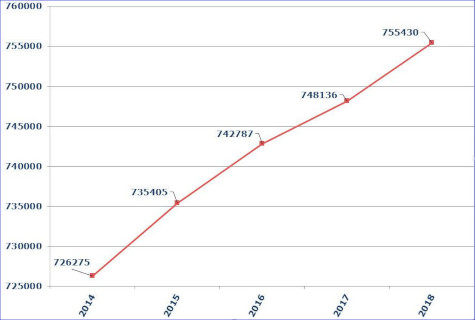 "New amateur licenses granted by FCC are down 2% over last year," noted ARRL Volunteer Examiner Coordinator (VEC) Manager Maria Somma, AB1FM, "but this is the fifth year in a row the total has been greater than 31,000. I predict that the number of new licensees will be more than 30,000 at the end of this year as well, and I'm optimistic this trend will continue."
"New amateur licenses granted by FCC are down 2% over last year," noted ARRL Volunteer Examiner Coordinator (VEC) Manager Maria Somma, AB1FM, "but this is the fifth year in a row the total has been greater than 31,000. I predict that the number of new licensees will be more than 30,000 at the end of this year as well, and I'm optimistic this trend will continue.".jpg) He noted that during emergency networks, requiring participating stations -- often portable -- to use their assigned call signs during each transmission could prove "burdensome and can hinder the flow of emergency traffic on the channel."
He noted that during emergency networks, requiring participating stations -- often portable -- to use their assigned call signs during each transmission could prove "burdensome and can hinder the flow of emergency traffic on the channel." Sponsored by
Sponsored by 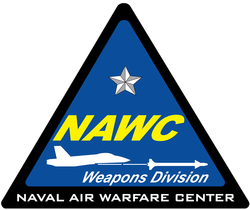 employees a novel approach to teaching radio propagation, said Brian Hill, KF4CAM, the lead for electromagnetic maneuver warfare experimentation in the NAWCWD Avionics, Sensors and E*Warfare Department. Hill, who got his license while he was still in high school, is also the department's "innovation ambassador."
employees a novel approach to teaching radio propagation, said Brian Hill, KF4CAM, the lead for electromagnetic maneuver warfare experimentation in the NAWCWD Avionics, Sensors and E*Warfare Department. Hill, who got his license while he was still in high school, is also the department's "innovation ambassador."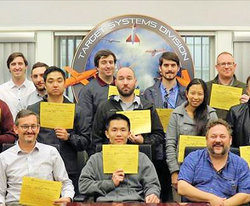
 standard station, the world's oldest continuously operating radio station. A memorandum of understanding is in the works.
standard station, the world's oldest continuously operating radio station. A memorandum of understanding is in the works..jpg)
.jpg) OSCAR 100 (QO-100) became available on February 12 for general operation by stations within QO-100's footprint. Emceeing the opening ceremony was Qatar's former Deputy Prime Minister Abdullah bin Hamad al-Attiya, A71AU, who chairs the Qatar Amateur Radio Society (QARS) and is a satellite patron.
OSCAR 100 (QO-100) became available on February 12 for general operation by stations within QO-100's footprint. Emceeing the opening ceremony was Qatar's former Deputy Prime Minister Abdullah bin Hamad al-Attiya, A71AU, who chairs the Qatar Amateur Radio Society (QARS) and is a satellite patron.-Footprint.png)
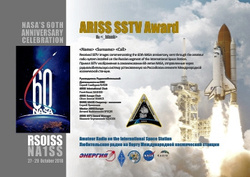 "The ARISS team wanted to give the community another opportunity to download the SSTV images we developed for you, given the weak-signal situation that occurred last weekend," said ARISS-International President Frank Bauer, KA3HDO. Bauer clarified that the same 12 images transmitted last weekend will be used for this weekend's experiment.
"The ARISS team wanted to give the community another opportunity to download the SSTV images we developed for you, given the weak-signal situation that occurred last weekend," said ARISS-International President Frank Bauer, KA3HDO. Bauer clarified that the same 12 images transmitted last weekend will be used for this weekend's experiment..png) In
In  The 2019
The 2019 .jpg) The Amateur Radio on the International Space Station (
The Amateur Radio on the International Space Station (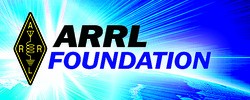 Several new ARRL Foundation Board members joined the table at the Foundation's Annual Meeting on January 29. ARRL Foundation Board members elected by the ARRL Board of Directors at its January 18 - 19 Annual Meeting include Atlantic Division Director Tom Abernethy, W3TOM, for a 3-year term; Northwestern Division Director Mike Ritz, W7VO, for a 2-year term; Pacific Division Director Jim Tiemstra, K6JAT, for a 1-year term, and Southwestern Division Director Dick Norton, N6AA, for a 3-year term. Past West Gulf Division Director Dr. David Woolweaver, K5RAV, who stepped down from the ARRL Board in January, was elected to remain on the ARRL Foundation Board for another 3-year term and will serve as president. Others on the ARRL Foundation Board are Tim Duffy, K3LR; Jim Fenstermaker, K9JF; Brian Mileshosky, N5ZGT, and David Norris, K5UZ. Mileshosky was elected Vice President; Rick Niswander, K7GM, was re-elected as Treasurer, and Lauren Clarke, KB1YDD, was re-elected as Secretary. Woolweaver appointed Fenstermaker to chair the Scholarship Committee with Abernethy, Duffy, Norris, Ritz, and Tiemstra as members. Mileshosky was tapped to again head the Proposals Committee, with Norton and Woolweaver as members. Woolweaver will chair the Audit and Financial Committee, with Mileshosky and Niswander as members.
Several new ARRL Foundation Board members joined the table at the Foundation's Annual Meeting on January 29. ARRL Foundation Board members elected by the ARRL Board of Directors at its January 18 - 19 Annual Meeting include Atlantic Division Director Tom Abernethy, W3TOM, for a 3-year term; Northwestern Division Director Mike Ritz, W7VO, for a 2-year term; Pacific Division Director Jim Tiemstra, K6JAT, for a 1-year term, and Southwestern Division Director Dick Norton, N6AA, for a 3-year term. Past West Gulf Division Director Dr. David Woolweaver, K5RAV, who stepped down from the ARRL Board in January, was elected to remain on the ARRL Foundation Board for another 3-year term and will serve as president. Others on the ARRL Foundation Board are Tim Duffy, K3LR; Jim Fenstermaker, K9JF; Brian Mileshosky, N5ZGT, and David Norris, K5UZ. Mileshosky was elected Vice President; Rick Niswander, K7GM, was re-elected as Treasurer, and Lauren Clarke, KB1YDD, was re-elected as Secretary. Woolweaver appointed Fenstermaker to chair the Scholarship Committee with Abernethy, Duffy, Norris, Ritz, and Tiemstra as members. Mileshosky was tapped to again head the Proposals Committee, with Norton and Woolweaver as members. Woolweaver will chair the Audit and Financial Committee, with Mileshosky and Niswander as members.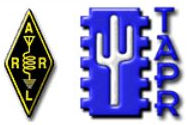 Technical papers are solicited for presentation at the ARRL/TAPR Digital Communications Conference (DCC) this fall. The DCC will be held September 20 - 22 at the Marriott Detroit Metro Airport Hotel. Papers will also be published in the Conference Proceedings. Authors do not need to attend the conference to have their papers included in the Proceedings. The submission deadline is August 5.
Technical papers are solicited for presentation at the ARRL/TAPR Digital Communications Conference (DCC) this fall. The DCC will be held September 20 - 22 at the Marriott Detroit Metro Airport Hotel. Papers will also be published in the Conference Proceedings. Authors do not need to attend the conference to have their papers included in the Proceedings. The submission deadline is August 5. 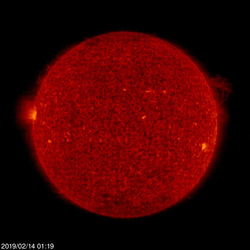 Predicted solar flux over the next 45 days is 70 on February 14 - 20; 72 on February 21 - 25; 71 on February 26 - March 9; 70 and 71 on March 10 - 11; 72 on March 12 - 24, and 71 on March 25 - 30.
Predicted solar flux over the next 45 days is 70 on February 14 - 20; 72 on February 21 - 25; 71 on February 26 - March 9; 70 and 71 on March 10 - 11; 72 on March 12 - 24, and 71 on March 25 - 30.







